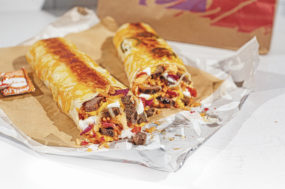Thirty years of standing over an air-hammer breaking out perfectly good dairy barn floors because the top eighth of an inch on the surface is wrong gives someone a lot of time to think, “There has to be a better way!” Is it possible to install a floor texture to give livestock good traction without costing a lot of money; not creating problems with falls (too smooth) or hoof wear (too rough)? The answer is yes!
As a dairy barn renovator that started in 1975 under the guidance of someone who had done it since 1950, there is a lot to be learned from the past 58 years, even given the technological advances and changes in the dairy industry over the past 15 years. Yet cows’ feet are pretty much the same.
Concrete is made up of stones, sand and Portland cement powder. The sand and cement are to bind the stones together in one solid mass. The concept of pouring concrete is to have a thorough mix of all three and near the surface have the stones laying down as flat as possible with a layer of sand and cement as a cream on top.
When the concrete is still in its “setting-up” mode, this is the time to be texturing the surface.
What you don’t want to do is be too aggressive and drag the stones out of their flat state because that will make a surface too abrasive for cows’ feet. What you do want to do is to put a texture in that eighth-inch of cream without disturbing the stones.
Pouring concrete isn’t rocket science, but it is all about timing. If texturing is done too early, it will be too rough and if too late, not rough enough.
When concrete is poured and leveled off with a bull-float (darby), it is glossy at first and dries down to a matte finish before going hard. When this matte finish is observed, and by tapping the surface, fingerprints can be left but your fingers stay dry – that is the time to be texturing it.
There are two ways to put an excellent surface on your floors that costs next to nothing.
For light-traffic areas such as humans or occasional cow traffic, a broom finish will do just fine. A fine-bristled shop broom works best as it will not drag up the aggregate like a stable broom will.
For high-traffic areas, the best surface that seems to be available is what is known as a “rollerbug” finish. This is achieved by using a tool known as a roller-tamper. It is fine mesh tandem rollers about 4 inches across and 3 feet wide. There are wider versions, but 3 feet seems to be the most efficient size. They are designed for tamping down the stones and bringing up the cream if used immediately upon pouring.
This is not what you want to do.
Once again, wait for the concrete to dry to a matte finish before rolling. Some experimentation may be needed because that matte finish may occur within 20 minutes on one day and three hours the next, depending on weather.
The resulting surface yields a multitude of benefits that other methods cannot.
It provides traction the same way as tread on a tire does (as opposed to slip and catch). Grooves, whether imprinted or cut in, depend on the cow slipping first. Many hoof trimmers see the results of this every day by way of delaminations and interdigital injuries and corns.
Another bonus from the rollerbug finish is far less manure retained on the floor.
A standard diamond pattern groove half an inch wide by three-eighths of an inch deep every 4 inches will hold over 1 gallon of manure every 10 square feet (5 feet by 2 feet) of floor and exponentially more, if the grooves are made deeper or wider.
The rollerbug floor will hold approximately 80 percent less. This is good news in helping to control the spread of hoof warts (papillomatous digital dermatitis or PDD) and other bacteria and disease.
The rollerbug finish also works well for sand-bedded stall barns because it tends to hold the sand particles in place, which in itself provides traction. On the grooved floors, the sand tends to fill in the grooves and polishes the smooth floor even smoother in between.
The roller-tamper tool can be purchased at any concrete tool supplier and many equipment rental places. There are at least three different manufacturers of this item in North America and cost approximately $250.
Many contractors will already own one and never thought of using it in the later stages of concrete setup to provide a finished texture.
Because this pattern is imprinted in the layer of sand and cement (the stones are the hardest part of the concrete but lay beneath that surface), it will lose its effectiveness in about seven or eight years.
At that time, there are other options available to re-establish traction – but that is seven or eight years of traction that was gained for exceptionally low cost, not to mention the other benefits listed above. PD





